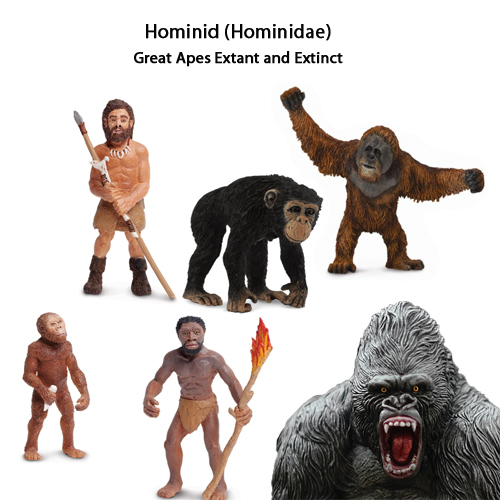Everything Dinosaur team members have produced numerous blog posts documenting fossil discoveries and research into human evolution. Scientists are gradually gaining a better understanding of the evolution of our own species (Homo sapiens). Readers may have noticed a change in the use of the terms that describe members of the Homo genus, related genera and their ancestors.
For example, the terms “hominid” and “hominin”. In the past, these terms were interchangeable. Both hominid and hominin referred to the group of apes consisting of modern humans, extinct humans and all our immediate ancestors. The definition of these terms has changed. This change can lead to confusion, so, Everything Dinosaur thought it might be helpful to explain what “hominid” and “hominin” now refer to.
Hominid (Hominidae Family)
The term “hominid” has been given a wider definition, encompassing all the Great Apes. It now encompasses all modern and extinct Great Apes (humans, chimpanzees, including the bonobos, gorillas, orangutans and their immediate ancestors.

Hominin Defined
The term “hominin” now refers to a narrower group. This group consists of modern humans, extinct human species and all our immediate ancestors (including members of the genera Homo, Australopithecus, Paranthropus and Ardipithecus).

Hominid or Hominin?
The change in definition has occurred as palaeoanthropologists have altered the way that apes are classified. In the previous taxonomy, humans were distinct and separate from all other apes. They were placed into their own, unique family the Hominidae or hominids, one of three families classifying the apes.
Scientists have revised their classifications to develop more up-to-date evolutionary trees. The revision has reduced the number of families recognised to just two. All the Great Apes (including humans) are placed into the same family, the Hominidae or hominids. The next branching of this evolutionary tree divides the orangutans into one subfamily and all the remaining Great Apes into another subfamily. Then at the tribe level, gorillas, chimpanzees and humans separate onto different branches of the evolutionary tree with humans in the Hominini or hominin branch.
To view models and replicas of extinct Great Apes and ancestors of modern humans: Everything Dinosaur Prehistoric Animal Models and Figures.
Everything Dinosaur acknowledges the assistance of post produced by the Australian Museum (Sydney) in the compilation of this article.
Visit Everything Dinosaur’s award-winning website: Everything Dinosaur.






Leave A Comment